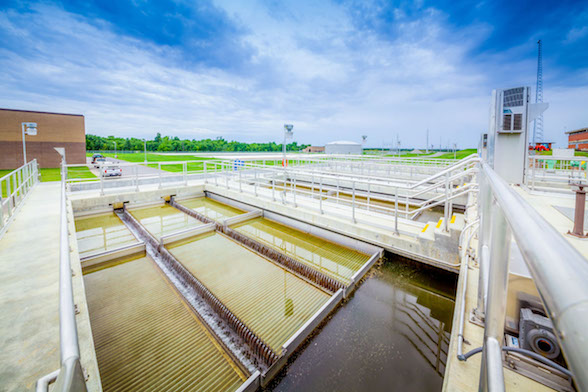One of the best ways to prepare for any exam is to solve many practice problems. To help you study for your wastewater treatment operator certification exam, here are four practice problems.
By the way, please keep in mind these problems are for anyone who is pursuing the first two certification levels. I included the answers at the bottom of this page.
If you want more practice problems, click here. Or, if you want to take an online course, click here.
Practice Problems:
- What is the typical removal efficiency of settleable solids in a primary clarifier?
- 10 to 15%
- 20 to 50%
- 40 to 60%
- 95 to 99%
2. Which of the following is associated with thick billows of white sudsy foam in the aeration tank?
- Old sludge
- Low F/M ratio
- High F/M ratio
- High MLSS concentration
3. What impact does the injection of chlorine gas have on the pH of wastewater?
- Increase pH
- Decreases pH
- Does not affect pH
- Fluctuates the pH
4. Which gas is the most abundant in a properly operating anaerobic digester?
- Hydrogen sulfide
- Nitrogen
- Carbon dioxide
- Methane
If you’re preparing for the operator certification exam, check out our latest online course that covers 90 practice problems.
Answers:
-
D
The typical removal efficiency for settleable solids in a primary clarifier is 95 to 99%. Make sure to memorize the removal efficiency for other constituents, such as suspended solids and BOD. Questions on removal efficiency are fairly common on the operator exam, so study them. Typically, they’ll expect you to memorize the removal efficiencies. You may want to create flash cards to memorize these numbers. There’s not much to these questions except memorization.
For more information on removal efficiencies of the primary clarifier, read page 129 of the textbook, Operation of Wastewater Treatment Plants , Volume 1, 7th Edition.
2. C
Thick billows of white sudsy foam in the aeration tank is often encountered during the start-up of a treatment plant. In this stage, there aren’t many microorganisms in the aeration tank, but there’s plenty of food (BOD) coming in. When you calculate the F/M ratio, you’ll get a larger number because the “F” or food is a big number, while the “M” or microorganism population is fairly small.
Another characteristic that’s associated with thick billows of white sudsy foam in the aeration tank is young sludge, which is a group of microorganisms that hasn’t spent a lot of time in the aeration tank.
This is also a fairly popular question on certification exams. Remember that thick billows of white sudsy foam in the aeration tank is associated with a high F/M ratio and young sludge.
For more information, go to pages 53 and 75 of the textbook, Operation of Wastewater Treatment Plants, Volume 2, 7th Edition.
3. B
When chlorine gas is added to wastewater, it decreases the pH because it forms acids when it is mixed with wastewater. Whenever acids are formed in liquid, they will lower the pH, since acids have low pH.
Make sure you understand the pH scale before you take the exam. You won’t be able to answer this type of question correctly without understanding the basics of the pH scale.
If you want to learn more about the impacts of chlorine gas to wastewater, read pages 349 and 350 of the textbook, Operation of Wastewater Treatment Plants, Volume 1, 7th Edition.
4. D
Methane is the most abundant gas in an anaerobic digester. It accounts for about 65 to 70% of the digester gas. The second most abundant gas is carbon dioxide, which accounts for about 30 to 35%. Lastly, there’s a very small amount of hydrogen, nitrogen, and hydrogen sulfide, which account for a combined 1 to 2% (hydrogen + nitrogen + hydrogen sulfide).
Questions on the composition of digester gas is also common on the exam. You’ll have to memorize the percent composition of each gas in the digester.
If you want to learn more about the composition of digester gas, read page 158 of the textbook, Operation of Wastewater Treatment Plants, Volume 2, 7th Edition.
Helpful Resources
If you’re looking for additional practice problems, click here.

